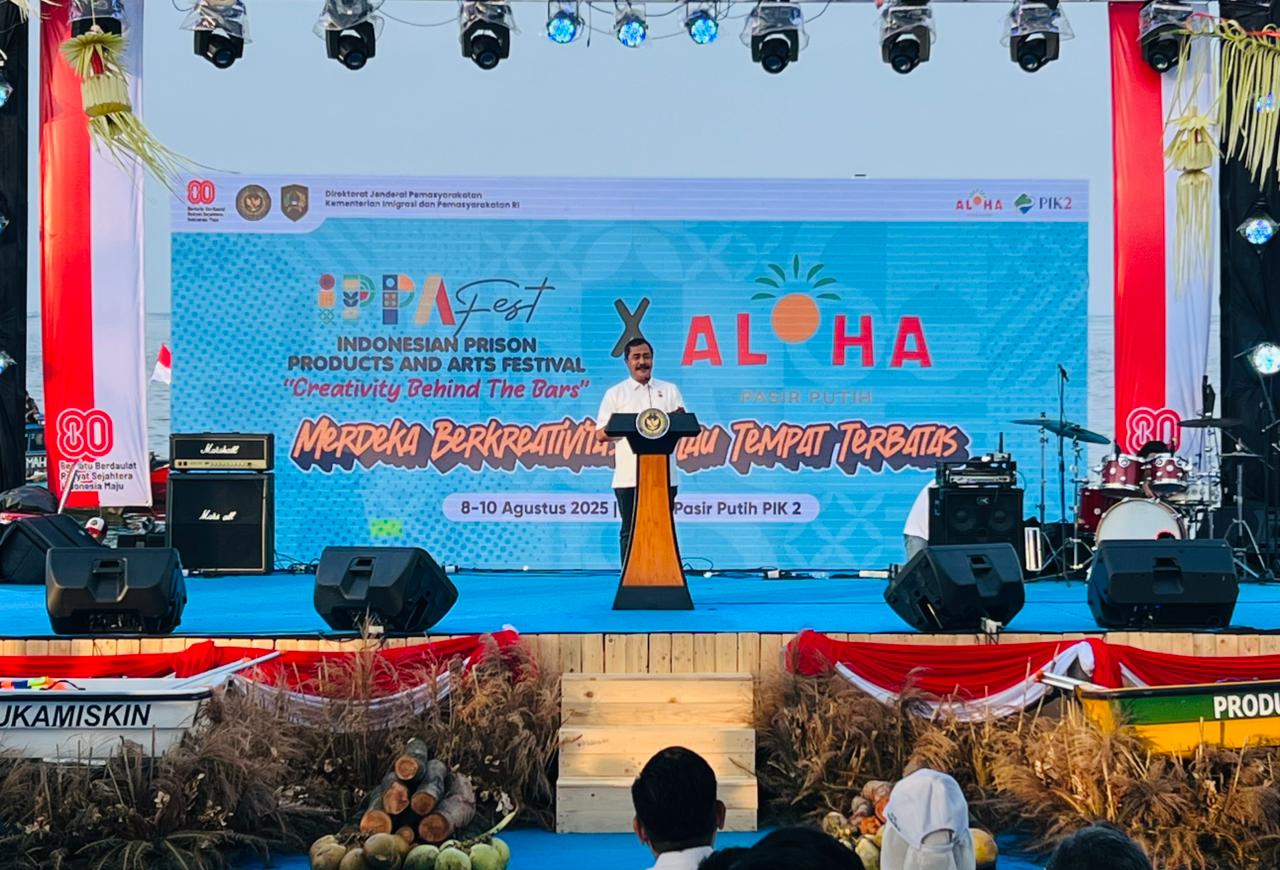This story was originally published in The Highlight, Vox’s member-exclusive magazine. To get early access to member-exclusive stories every month, join the Vox Membership program today.
It all seemed to start last summer, when Love Island USA contestant Leah Kateb shared a TikTok video of her fragrance collection, which included Lush’s kettle corn-scented body spray, called Let the Good Times Roll. “You just smell like caramel cake and like you’re ready to be served on a decorated plate,” she told her 4 million followers. Influencers began evangelizing about the sweet, buttery fragrance, noting its ability to attract compliments from strangers.
Only this wasn’t just the case of a cult product going viral. For several months now, my TikTok “For You” page has been flooded with regular consumers wanting to smell delicious.
It still seems like there’s only one desirable way to smell — edible, delectable, like you can literally be eaten. Whether it’s sweet vanilla fragrances, Arabian perfumes featuring tonka beans, or a growing number of pistachio scents, Gen Z’s most visible beauty obsession at the moment is smelling like a bakery.
Synthetic dessert-like notes, such as vanilla, chocolate, caramel, and honey, are commonly found in perfumes. However, this booming scent category, known as “gourmand,” has seen a huge boost in popularity on #PerfumeTok and #FragranceTok, over the past year. The food-inspired fragrance market is on a robust growth trajectory. Last year, Spate reported that online searches for gourmand scents are growing at a rate of 77.5 percent year-over-year.
With perfumers jumping on the foodie bandwagon and experimenting with more edible notes, the trend still has plenty of room to grow. Future Market Insights predicts that the gourmand fragrance market will expand from a value of $32.5 billion in 2025 to $55 billion in 2035.
Last year, these scents were practically unavoidable. Among other delectable fragrances, Kayali’s Vanilla 28, Tom Ford’s Vanilla Sex, and Yves Saint Laurent’s Black Opium became viral sensations. Glossier finally expanded its You perfume line to include a plum scent with notes of buttercream and almond. Celebrities have also been influential in this space as well; pop singer Sabrina Carpenter released a whole line of dessert-themed fragrances.
The dessert fad has even found its way into drugstore aisles, in the form of chain bakery collabs. Earlier this month, Dove and the viral cookie company Crumbl released a body-care line that includes a lemon glaze-scented hand wash and a Nilla Bean cupcake deodorant. Thanks to a recent collaboration between Native and Dunkin’ Donuts, you can now buy “strawberry frosted” deodorant. Some food chains are even entering the beauty market by themselves. In case you want to smell like a buttered pretzel, mall food court staple Auntie Anne’s is now selling its own perfume.
Elements of the gourmand craze are a bit absurd and, in a word, cringe. There’s something fundamentally juvenile about walking around smelling like a pretzel or a croissant. This is probably because dessert-y fragrances are inherently nostalgic. They’re a reminder of the youthful, less sophisticated scents from Bath and Body Works that first became popular in the ’90s, or even of collecting candy-flavored Lip Smackers, which have been a hit with youths since 1973.
Beyond that, the function of these scents — at least according to TikTok — is a bit more specific than the average, non-dessert fragrance. Besides their familiarity, TikTok users claim to love these cloying scents for their instant gravity.
The objective of wearing gourmand perfumes isn’t to just leave an impression, but to chase a response; someone should literally want to devour you. Listening to influencers shill vanilla and caramel scents on #PerfumeTok feels like listening to the desperate advice of a pickup artist.
“Gourmand” as a profitable scent category is relatively new, widely credited with the launch of Mugler’s game-changing 1992 fragrance Angel. The perfume — which combines vanilla, red fruits, and patchouli oil — is considered the first modern gourmand fragrance, setting off a boom of delectable scents in the ’90s and 2000s. Some other examples include Jessica Simpson’s Dessert Beauty line and Urban Decay’s lickable body powder.
Post-pandemic, the marriage between food and beauty has never been more prevalent — and marketable. The past few years have seen viral makeup trends like “latte girl,” “strawberry girl,” and “glazed doughnut skin.” Nearly every beauty ad features some sort of cafe item or cocktail now. The popularity of gourmand perfumes, in particular, speaks to a post-Covid climate where consumers are seeking comfort and nostalgia and specifically scratching that itch through online shopping.
“Sweets make a great marketing tool because they tap into familiar scents and flavors that people instantly recognize,” says Shelly Socol, co-founder and CEO of the marketing agency 1r. “It makes sense that food-related notes like vanilla and coconut help bridge the gap when customers can’t smell a scent in person.”
Familiarity is key given the way consumers are discovering fragrances now, increasingly through social media ads and online forums such as #FragranceTok. Between 2019 and 2024, Socol says that online purchases went from 19 percent to over 25 percent of total fragrance sales.
Bakery-inspired fragrances practically market themselves, but the way they’re sold online still feels oddly desperate. Scrolling through the #gourmand hashtag, you’ll often see influencers, whether through organic reviews or pre-written ads, claiming that they couldn’t get through the day without being showered in compliments or, the ultimate sign that a perfume is worth purchasing, that men like it. Some influencers swear that they’ve been chased down the street.
It’s certainly an effective way to promote a product that people can’t smell for themselves through a phone screen. And despite how dramatic these testimonials seem, they’re often fairly accurate. “Sweet, edible notes are universally liked, so they tend to get more compliments, triggering an instant, positive reaction,” says Socol. Still, the way gourmand products are branded as “compliment getters” or presented as some sort of sensory mating call feels extremely limiting.
While this issue is most visible in the gourmand sector of #FragranceTok, it represents an influencer-driven approach to perfume shopping in the age of overconsumption.
Perfume buyers aren’t being encouraged to buy scents that reflect their personalities and tastes, but rather whatever conveys a certain identity or feeling to other people. In a piece for The Cut, titled “Perfume Culture Is Starting To Stink,” culture writer Cat Zhang wrote about the decline of the perfume industry due to incessant trends and classifications on TikTok. “The concept of the signature scent has been phased out for the ‘scent wardrobe,’ aromas for every mood, identity, and occasion.” Who benefits there? Maybe perfume wearers, but certainly perfume sellers.
As a beauty ritual, perfumes have always felt somewhat sacred in that they’re largely immune to fast-moving trends. Different categories have different effects, which may fall in and out of favor but are too elemental to go entirely out of style: Florals can evoke the feeling of being in nature, an aquatic fragrance can take you out of your cubicle and onto a beach; lavender has relaxing properties, citrus scents can boost serotonin. Likewise, perfumes are a subtle but ideal outlet for self-expression in a way that clothes and makeup may not allow. They convey a level of taste and individuality. They can spark curiosity and even imagination, transporting you and the people around you to a different place or time.
For now, though, it seems like the gourmand takeover shows no signs of slowing down. It’s expanding to include practically any scent that might be in your refrigerator or kitchen cabinet, from less popular fruits to seeds to milk. Maybe this is a sign that consumers are ready to experiment, even while confining themselves to a trend. Or maybe it’s just boredom — a sign to remember that perfumes are a lot more fun than they seem on TikTok.


















































